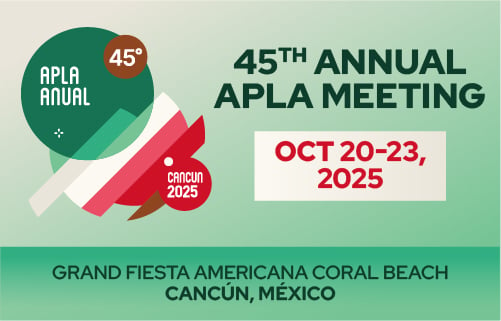4 min read
How Trump’s Big Beautiful Bill and 45Z Could Reshape the SAF Market
ResourceWise
:
Jul 17, 2025 8:00:00 AM

The global aviation sector is under pressure to decarbonize, and sustainable aviation fuel (SAF) is widely seen as a critical aspect of that process. With a drop-in replacement for jet fuel with the potential to cut emissions by up to 80%, SAF holds immense promise to fit the bill. But this will only happen if it can scale affordably.
That’s where policy comes into play. Tax credits like the US Section 45Z clean fuel production credit play a crucial role in determining SAF's financial viability. And now with President Trump signing the so-called "One Big Beautiful Bill" into law, the landscape is shifting again.
This legislation extends, revises, and in some ways redefines the future of SAF incentives in the US Here’s what changed and what it could mean for producers, investors, and strategists navigating the aviation market.
What Is 45Z and Why Does It Matter for SAF?
Section 45Z, first introduced under the Inflation Reduction Act, provides a performance-based tax credit for the production of low-emissions transportation fuels. The credit is calculated based on a fuel’s lifecycle carbon intensity (CI), with the potential to earn up to $1.75 per gallon.
For SAF producers, this credit has been a game-changer. It rewards lower CI scores and provides a predictable framework for supporting plant construction, feedstock contracts, and offtake agreements. It also creates a competitive advantage for those who can optimize supply chains and validate sustainability credentials.
With the new legislation, 45Z is no longer just a pilot policy. It now serves as a lynchpin in the future of SAF adoption.
What’s in the Bill: Key SAF-Relevant Provisions
The Trump administration budget, formally passed as H.R.1 in May 2025 and signed into law on July 4, includes a number of significant updates to the 45Z framework.
Extended Credit Timeline
The legislation extends the 45Z credit through 2027, providing SAF stakeholders with at least two more years of support. There’s also a provision for optional review periods to add extensions based on several criteria.
Adjusted Credit Values
While the original 45Z structure offered SAF producers up to $1.75/gallon, the final bill reduces that to $1.00/gallon. The reduction reflects political pressure to tighten spending while still preserving meaningful incentives.
Domestic Feedstock Preference
The bill imposes a 20% haircut on the credit value if SAF is produced using imported feedstocks. This aims to boost the use of US-sourced corn, soy, tallow, and other agricultural and waste-based inputs.
Lifecycle Calculation Changes
Notably, the bill excludes indirect land use change (ILUC) from lifecycle emissions calculations. This will likely offer advantages to corn- and soy-derived SAF pathways, which are otherwise penalized in many global CI scoring frameworks.
Benefits for the SAF Market
The revisions from the new law will reshape and benefit the SAF market in several key ways:
Investor Confidence and Planning Horizon
The 45Z extension provides longer-term certainty, a critical element for infrastructure financing and project development. Two years may not sound like much, but in a fast-evolving regulatory environment, it's a welcome window for locking in deals.
Domestic Sourcing and Supply Chain Strategy
The feedstock shift will drive many producers to prioritize domestic materials. At least for American production, the move could boost rural economies and shorten supply chains.
Carbon Intensity Optimization
With ILUC excluded, US bio-based pathways now offer much greater appeal. This may shift procurement strategies toward easier-to-model crops and away from more complex imported waste oils.
Market Momentum vs. Margin Compression
The reduced SAF credit value may dampen some investor enthusiasm, especially for early-stage ventures banking on higher margins. However, continued policy support signals long-term viability.
SAF Challenges with New Bill’s Passage
While Trump’s bill offers much-needed certainty and extended incentives for SAF producers, it’s not without drawbacks. Several provisions in the legislation introduce new risks and structural limitations that could globally impact SAF markets.
Reduced Credit Value Shrinks Margins
One of the most immediate concerns is the reduction of the SAF tax credit value from $1.75 to $1.00 per gallon. For producers operating on thin margins or still scaling, this change may diminish the economic case for SAF investment. This squeeze will be particularly difficult in the short term.
The drop in support could also delay new projects or make it harder to compete with fossil jet fuel without additional state-level subsidies or corporate offtake agreements.
Indirect Land Use Change Exclusion Raises Credibility Flags
The decision to exclude Indirect Land Use Change from carbon intensity calculations may simplify modeling and benefit certain US feedstocks like corn and soy. But it comes at a reputational cost.
ILUC has served as a longstanding metric used to reflect the broader environmental consequences of converting land for biofuel production. Its removal undermines lifecycle emissions accuracy and could invite scrutiny from international regulators, non-government organizations (NGOs), or SAF buyers prioritizing science-based claims.
In the long run, this move could erode confidence in US-based SAF credit systems if markets begin to diverge on defining what actually qualifies as “clean” fuel.
Domestic Feedstock Prioritization: Global SAF Disruption Ahead
Applying a 20% credit reduction for imported feedstocks strongly incentivizes SAF production using US-sourced inputs. While this supports American agriculture and refining, it creates a barrier for many global SAF producers. In particular, those relying on used cooking oil (UCO), animal fats, or residues from Asia and Latin America will see increased challenges.
Additionally, this shift could fragment the international SAF market, disrupt trade flows, and limit feedstock diversification at a time when global SAF demand is expected to surge. Countries without large domestic feedstock bases may find themselves priced out or unable to compete under new US incentives.
What the Data Says on the Market Ahead
Data and insights from Prima CarbonZero offer a closer look at how these changes could play out:
- Regional Feedstock Availability: In the Midwest and Southeast US, soy and corn oil availability is strong. But logistical bottlenecks and processing constraints could cap growth.
- CI Score Benchmarking: The exclusion of ILUC shifts CI scoring dynamics across the board. The disparities carry the risk of added strain in global standardization of the measurement.
- Voluntary Market Monitoring: As policy incentives adjust, voluntary demand signals become more important. Prima CarbonZero tracks SAF offtake agreements, airline sustainability commitments, and emerging credit price signals to help clients understand where demand is truly materializing.
Turbulent Skies or Strategic Lift-Off?
The SAF market is flying through policy turbulence, but it isn’t crashing. On the contrary, with continued support from 45Z and evolving demand from both compliance and voluntary buyers, SAF remains one of the most promising decarbonization tools in the transport sector.
Producers and investors that adapt to new rules, optimize CI scoring, and align sourcing with US policy incentives will be best positioned to lead.
As the new policy environment takes flight, the question isn’t whether SAF has a future—but who will shape it.
As policy shifts continue to change and shift how the global markets operate, intelligence is key. Platforms like Prima CarbonZero equip market participants with the insight needed to navigate volatility, validate carbon claims, and plan with confidence.
Learn more about how Prima CarbonZero can inform your strategy and help you make the best possible decisions for your business.




